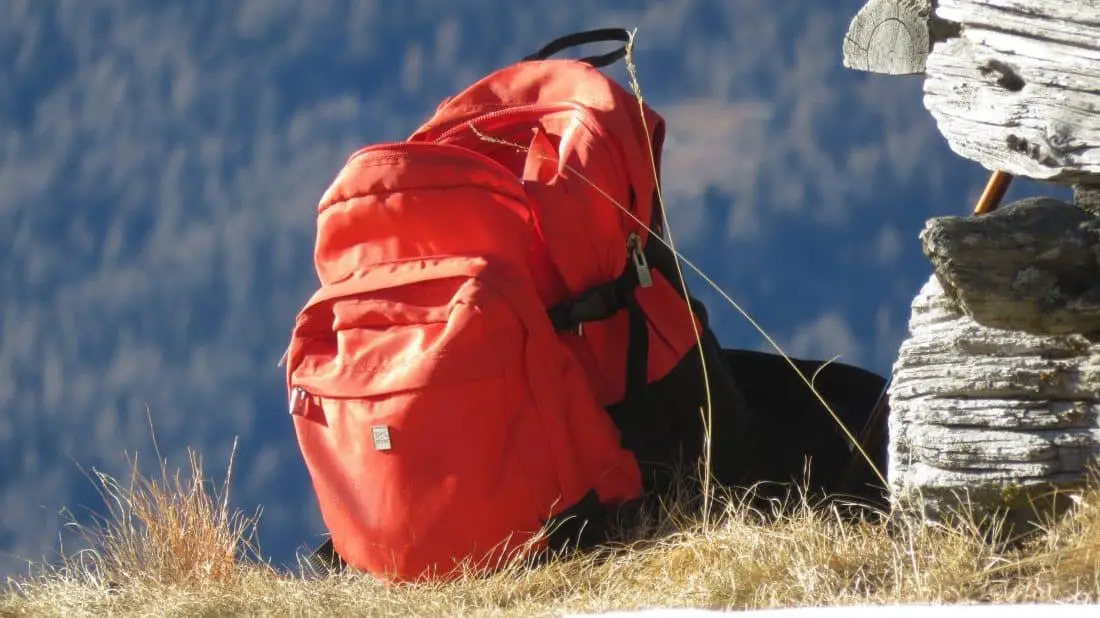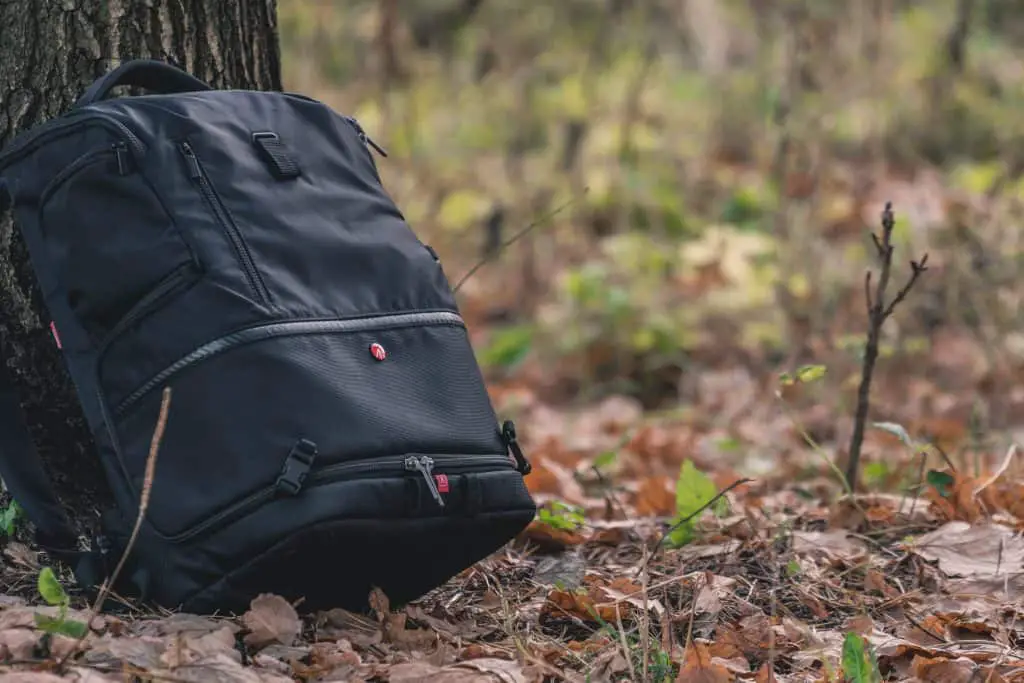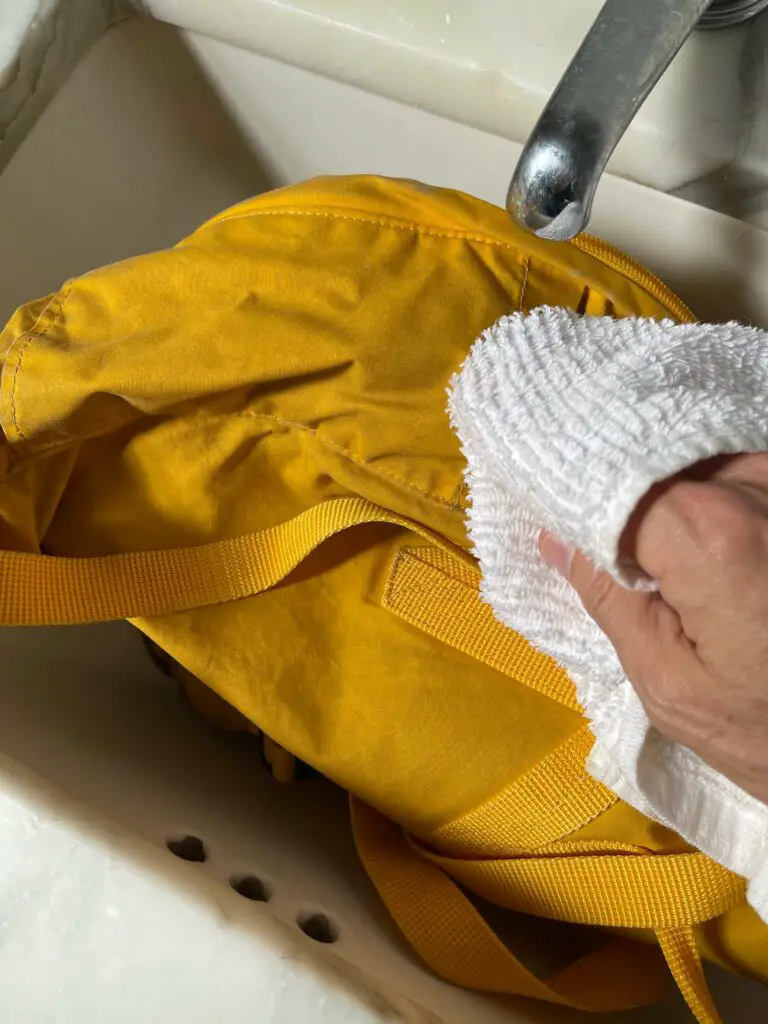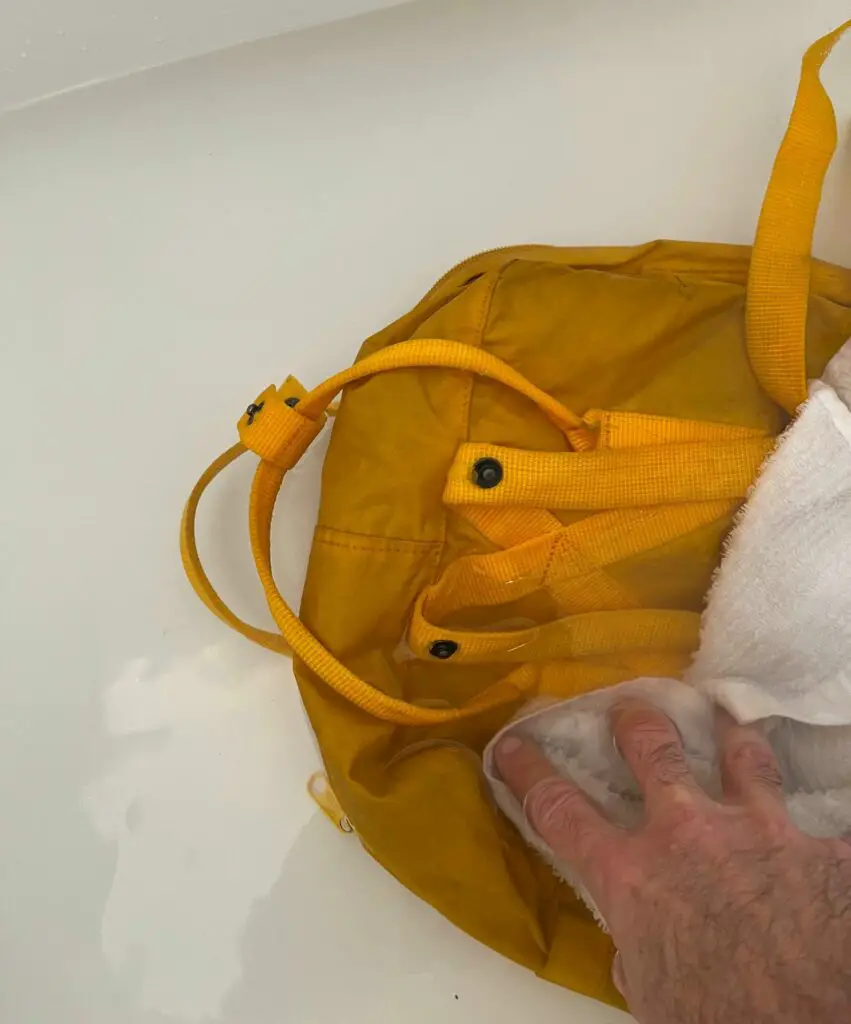We’ve all been there.
You go hunting for your favorite backpack you last used in the fall or spring, but it’s been months (ahem…years) since you last used it. You look high and low and ultimately find your backpack crumpled up in a corner of the basement or in the back of the closet.
The worst part? It hasn’t been opened (or cleaned out) since you’ve last used it. “My backpack smells like MOLD!” is the first thing you say… now what do you do?

We’ve put together this quick guide to help you with how to deodorize a backpack (or any bag really).
Our Step by Step Guide to Clean a Dirty Backpack
Let’s start with “why does my backpack smell bad?”
Step 1 – Face The Facts… Open Up Your Backpack
You sort of remember leaving your backpack down here, but you don’t have a clue what you could have left in there. All you know is that it hasn’t been opened since your last birthday…at least.
There could literally be anything on the other side of that zipper…a water bottle, half eaten granola bar, protein shake or the worst…a wet swimsuit.
Bottom line, unless you want to throw the bag (and its contents) away, it’s time to open it up and face the music. We promise it won’t be as bad you think and could even be better than you hope.
Once you recover from the shock (just kidding) it’s time to figure out what’s worth saving and what isn’t. Obviously throw away all the trash, food and other perishables that you find. Next, you’ll have to determine if there are any articles of clothing that were left in the bag. If so, it’s advisable to just toss them.

Listen, you haven’t worn that t-shirt or swimsuit since you last opened the backpack, so do you really miss it?
We didn’t think so. You’ll be surprised at how much the previous two things will do for the overall smell. Some people will stop here if the bag doesn’t smell too bad, but if there is still a lingering smell, the proceed to the next step
Step 2 – Do a Rough Cleaning With Just Water
It may not be necessary to soak your backpack yet. We recommend getting a rag (or even paper towel) and wetting it with water. You’ll want to spend your time wiping down the entire inside of the backpack.

Don’t rush through this part, really take your time to get inside every crevice of the bag as well as hidden pockets. The rag you are using should be damp, but it’s not necessary for it to be dripping with water.
Actual mold: If you’ve found actual mold on parts of the backpack (be sure to check the fabric, zippers and straps for this) then you’ll likely want to go further and use something like a soft toothbrush to gently brush away the growth. Outdoors would be best to ensure you’ve got good ventilation.
After you’ve opened every zipper or velcro pocket and wiped the backpack down thoroughly, take the bag outside and let it air out overnight.
If you take the bag out during the day, make sure it’s not directly in the sun, as the sunlight could wreak havoc on your bag’s colors.
Some people can stop after this step, as their bag’s smell has returned to normal. For more serious smells, including mold and mildew, please continue to the next step.
Step 3 – Read the Label, Can You Wash Your Bag?
The manufacturer of your backpack knows the exact materials used, so the care label is the best place to look to see what’s safe in terms of washing.
You might be wondering why we put this in step 3? Well, in our experience, you want to be as conservative as possible when caring for your backpack to maintain the original integrity (including colors) of your bag.
So, while it may be ok to wash it in the machine under cold water, you’ll want to make sure you following steps one and two above before committing to that.
If your back is well made (JanSport, North Face, Columbia, Burton, etc..) then it should be fine with washing it in cold water. The one exception? Leather! Make sure your bag doesn’t have any leather on it… this will ruin it, hands down.

Once you’ve determined the best means of washing your bag – cold water machine vs hand washing, please keep going to step 4 to understand the best method for cleaning it.
Step 4 – Don’t Use Soap… Use White Vinegar Instead.
We cannot emphasize this point enough…please do not use laundry detergent or any other kind of soap to clean your bag. It won’t go well.
Bags aren’t made like clothing…they have thick seams, pockets and various materials in addition to the “main” fabric of the bag. Soap has a horrible tendency to gunk up your bag really bad. We heard of people having to wash their backpacks, 2, 3, even 4 times trying to get all the soap out…and they eventually just give up.
The point? Don’t use in the first place.
Instead, use a substance that’s been around for millennia…white vinegar. White vinegar was first used in ancient Egypt more than 5000 years ago. The fact that it’s still being used today should tell you something. The best way to use vinegar is to dilute it with water. If you’re handwashing, dilute beforehand. If you’re machine washing, just pour a cup of vinegar in with the wash.
Vinegar has a way of bonding with foreign molecules (mold, mildew, etc..) and carrying them away once you remove the vinegar.
So you might be thinking, “But I want to deodorize my backpack, not make it smell like vinegar”.
Don’t let the smell of vinegar scare you. The odor will dissipate quickly once you’ve removed it from the bag. Continue to the step – drying.
Step 5 – Outdoor Drying is Your Friend

Like we previously mentioned in step 2, it’s best to dry your bag “opened up” and outside.
Don’t place in the direct sunlight, but you really want the constant airflow moving in and around the bag to dry quickly and evenly. If it’s wintertime, we might make an exception for this if it’s really cold (below 40°F). If that’s the case, just stick it inside with a fan near it to keep the air circulating.
18-24 hours and your backpack should be dry and good to go. In step number 6, we’ll talk about how to avoid getting here in the first place.
Step 6 – Avoid It Happening Again
After you’ve been through everything above, we’re fairly confident you won’t let this happen again, but you’d be surprised.
The remedy is simple…when you come home from your trip or hike, don’t forget to clean out your backpack. That means opening up every pocket and checking for the items we mentioned above that can cause your backpack to smell like mold. You’ll thank us (and yourself) in the long run.
My Backpack Smells Like Mold – Wrap Up
In Summary… your backpack can be made to smell normal again, but you’ll need to follow the steps above to make that happen.
Remember to be as gentle as possible with your bag and only do what’s absolutely necessary to fully neutralize the smell. We’re confident that following our guide above you’ll be back to using your backpack in no time.
Before You Go…
OK, so you’ve tried everything. It really can’t be saved? OK, we’ve got you covered there too. We’ve got a whole list of affordable backpacks that can help you start again without breaking the bank!
The Best Affordable Backpacks!
Related Articles
- The Great Debate: Backpack vs. Messenger Bag
- How Much Should a Backpack Weigh?
- What Are Backpacks Made of?
Bonus Video!
All product names, logos, brands, and trademarks are the property of their respective owners
